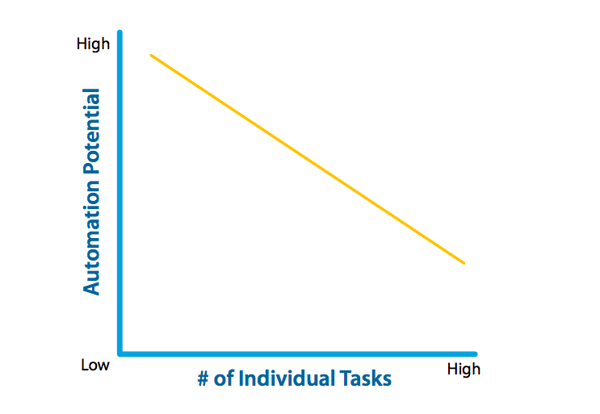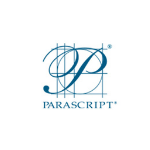
How To Estimate Your Document Automation Potential
Understanding the Key Factors that Affect How Much Document Automation You Can Achieve
When the word “automation” is brought up in a conversation, most people think of something that is completely handed over to machines. And that scenario can be true if the tasks involve very straightforward, highly repetitive work with little variance. Think of processes like provisioning an email account for a new employee and you’ll get the idea.
When it comes to automation of document tasks, while it is relatively easy to convert paper into images or to make resulting images of documents searchable, it is quite another thing to take unstructured document-based information and comprehensibly convert it into highly reliable, structured, and usable data. All of a sudden, aspects of a project or organization’s requirements that appear to be very straightforward begin to take on more ambiguity when it comes to assessing just how much automation can be achieved.
The ability to set realistic plans doesn’t have anything to do with whether a given solution incorporates a rules-based approach or uses advanced deep learning neural networks. Both paths, with the proper configuration can achieve high levels of automation.
It all comes down to understanding two aspects of a given project’s scope:
- The nature of tasks you wish to automate.
- The levels of automation available.
Asking the Right Questions
Many organizations, when considering implementing document automation fixate on the question of accuracy. Questions such as “what level of accuracy can your software provide?” are common. But that question is too narrow and doesn’t take into consideration the wide variety of tasks that can be involved. Anyone can easily state (truthfully) that a given solution can achieve 99% accuracy, but that information doesn’t reveal at all the actual amount of automation.
When it comes to understanding automation at the task level, are we talking document classification of single files, classification and separation of documents contained in a single file, data extraction of one field or multiple? Each scenario affects the level of automation which ultimately impacts your resulting workflow and staffing impacts.
The more variance you have with a process, the greater the chance that automation will decline. A simple document classification project involving 10 document types has a higher probability of significant task automation over a project involving extraction of 100 fields on a health remittance document, for example. Automation estimates must look at each discrete task individually in order to understand automation potential and measurement of automation should also be at the task level.

The second factor to consider is the reliability of the data from a system. A question often not asked is “how reliable is your system when detecting errors?” The industry uses the concept of a confidence score applied to each answer to divide data that is accurate vs. data that needs to be reviewed. The reality is that most organizations do not apply confidence scores correctly resulting in potentially high levels of task automation dragged down by 100% manual review. Without optimizing a system to use confidence scores, the ability to achieve any level of straight-through processing is impossible.
When approaching a document automation project, accuracy is only part of the equation. Equally important is understanding the nature of each individual task along with the reliability of the task results. Anything less and your project is at significant risk.

Putting Automation Into Action
For more best practices and recommendations, download a free copy of this ebook.
We worked with the industry's elite to develop this resource covering the best practices and tips for creating, capturing, collaborating, automating, and rising to new levels of content management excellence. Click through below to preview what's included and then download your copy here.
About Parascript
Our software analyzes over 100 billion documents annually and automates key tasks for financial services, government agencies, and the healthcare industry. Our clients are our partners – Business Process Outsourcers (BPOs), service providers, Original Equipment Manufacturers (OEMs), and Value-Added Resellers (VARs) in the U.S. and across the world. For more information visit www.parascript.com


